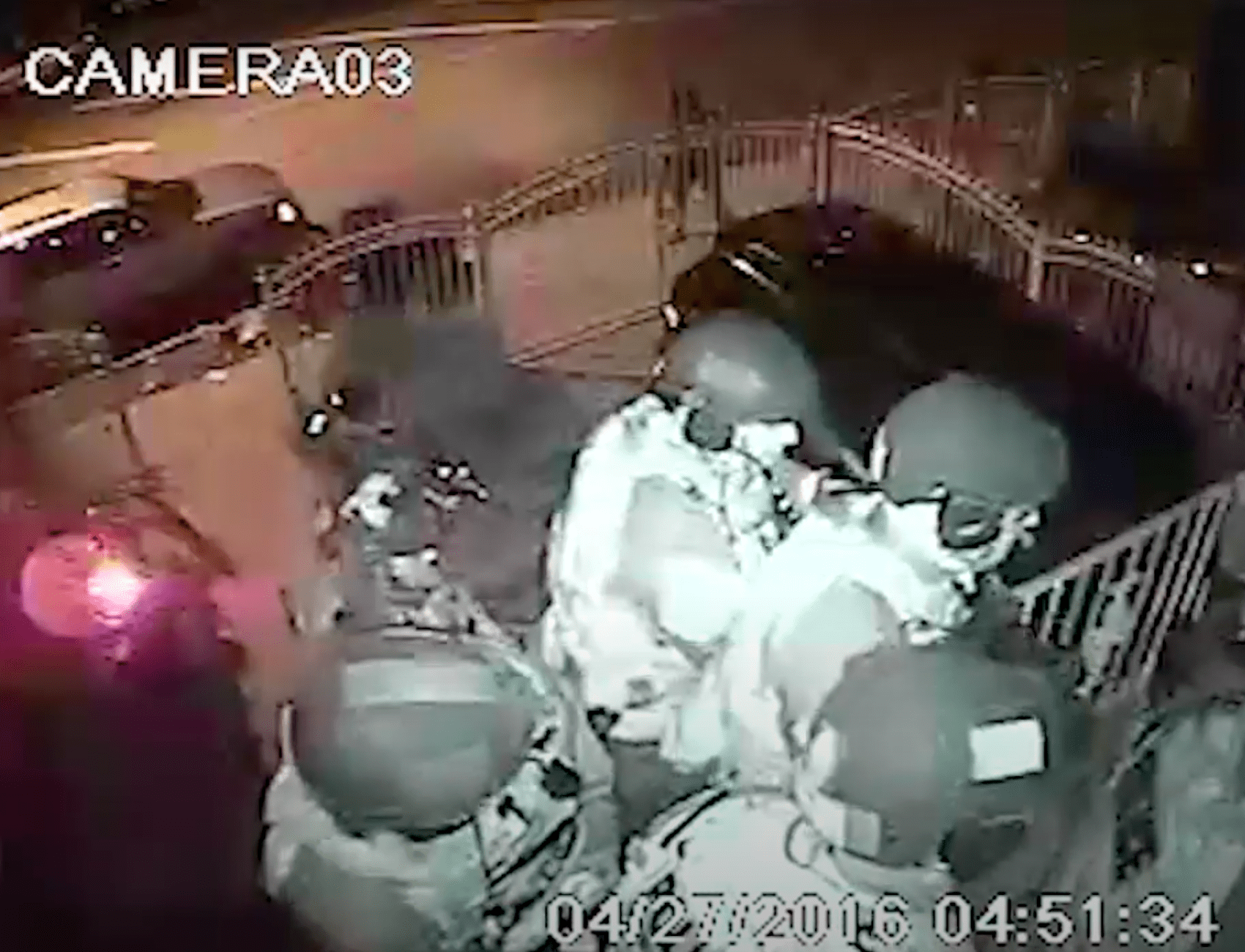New Documentary Reveals Silicon Valley’s Role in Notorious Bronx Gang Raid
On the pretext of conducting ‘transnational gang operations,’ ICE raids have swept up thousands of U.S. citizens.

A Silicon Valley data-mining company helped plan the largest gang raid in New York City history, according to internal ICE emails made public through a Freedom of Information Act request.
Hundreds of police officers descended on the North Bronx. Families were woken in the early morning hours at gunpoint. One man tried to flee out a window and fell to his death. One hundred twenty people were indicted; although only three are identified as non-U.S. citizens in court documents, ICE billed the operation as a “transnational gang raid.”
ICE data obtained through a separate FOIA request shows that this raid fits into a larger trend—the numbers of U.S. citizens arrested under ICE’s transnational gang program have grown significantly since 2006. More than 3,000 U.S. citizens were arrested under the program in the fiscal year 2018.
Police said the disruption to the neighborhood was outweighed by the public safety benefit of arresting violent gang members. Residents say the raid terrorized the community indiscriminately, regardless of gang affiliation. Prosecutors accused fewer than half of those targeted in the raid of belonging to a gang.
These and other revelations are featured in Part Two of “Raided,” a documentary film project produced for The Appeal.
“They attacked us, our whole community,” said Bronx resident Paula Clarke. Private surveillance footage shared exclusively with The Appeal shows dozens of officers with assault rifles detonating a flash-bang grenade as they broke into Clarke’s home.
Watch the video:
The ICE emails show that employees of Palantir traveled to New York to work directly with ICE and prepare law enforcement units for the mass no-knock raid. Palantir, co-founded by Trump transition team adviser Peter Thiel, is a data analytics company that frequently contracts with federal agencies and ICE.
Palantir did not respond to a request for comment.
Among those enlisted to assist ICE’s New York Homeland Security Investigations Violent Gang Unit in executing the raid was a Palantir “Mobile App guru,” the emails show.
For the raid, ICE requested and received the services of Palantir’s FALCON software, which pools data from various government agencies, including the FBI, CIA, Transportation Security Administration, Customs and Border Protection, and Coast Guard.
Ahead of the raid, at 9:04 p.m. on April 25, 2016, a Palantir employee sent an email to ICE. “FYI we’re all set here. Helping some random agents get setup but we should have a good viz on everyone,” they wrote.
The emails also show ICE got support from Qbase-McNeil Integrated Solutions, a company that supports ICE “with mission-critical IT service support and program management both domestically and internationally,” to coordinate laptops and a virtual private network for government agents. Qbase-McNeil also assists the Defense Information Systems Agency, the Office of Policy, Management and Budget in the Department of Interior, and the Bureau of Land Management, among other government bodies.
Qbase-McNeil is now owned by General Dynamics Information Technology, a company that contracts with the Department of Defense and other government agencies. GDIT did not respond to phone calls and messages requesting comment.
“What’s really alarming about this story is that you start to see the creeping effects of surveillance and ICE,” said Jacinta Gonzalez, senior campaign director for Mijente, an immigrant justice organization that puts pressure on technology companies to end their collaboration with ICE.
“It is important for us to remember that ICE is a police force,” she said, “and they are given military-grade surveillance equipment to go after folks. A lot of Palantir’s technology, for instance, was developed for use by the military in foreign wars and has now been repurposed for use domestically. … As long as we have police forces [like ICE] that have this much power of surveillance and tech companies that are creating tools to access fundamental parts of our lives—without protections to our fundamental rights—we are going to continue to see situations where more and more people are vulnerable to this type of surveillance from the government.”
U.S. citizens labeled “transnational gang” members are subject to ICE surveillance. ICE conducted wiretaps for the raid, and during the COVID-19 pandemic, ICE published a request for proposals to add facial recognition capabilities to a database for ”transnational gang” members in and around Washington D.C.
The day of the raid, 21-year-old Bronx resident Geovanni Martin was pronounced dead. As law enforcement approached an apartment he was staying in during the early morning hours, it is thought Martin feared they were coming after him because, according to the NYPD, he had outstanding warrants.
He attempted to leave through a sixth-floor fire escape. When police exited the building, they saw him, then reentered. According to witnesses who spoke to the New York Daily News, he fell from a window shortly after they returned. Immediately after his fall, he was still alive on the ground and spoke to police who restrained him despite his fall. Ambulances didn’t arrive for “a long time,” according to one witness, who said: “I’m not going to fully blame the officers, but the person you came for, you already got him. You didn’t have to come back.”
In the new documentary, Martin’s friend, Michelle Williams, said she believes he feared for his life—in part because of lingering trauma from the death of their classmate, Ramarley Graham, an unarmed teenager who was chased by police and shot dead in his own bathroom in 2012.
“That’s our classmate,” she says. “That was our friend. You know the fear that put in us, as kids, to know you can walk off the street and they break into your home and come and get you.”
Watch the documentary here:
Watch Part One here:
Correction: An earlier version of this article misstated how soon before the raid an ICE email was sent. It was sent more than a day before, not hours before.
